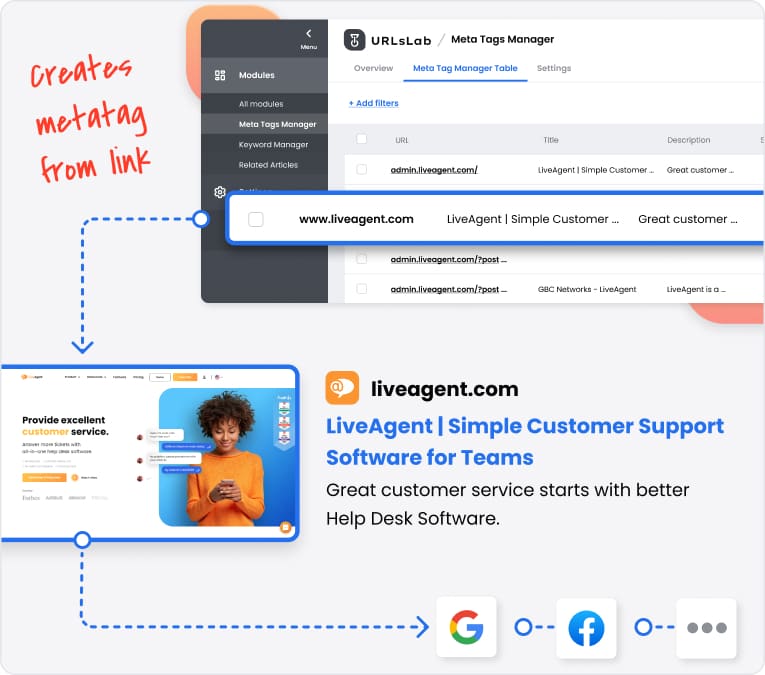What are Header Tags?
Header tags (H1-H6) structure web content, improve SEO, and enhance readability by dividing pages into hierarchical sections.
What are Header Tags?

Header tags, often integral in website design, provide both structure and context. Utilizing these tags aids in optimizing your page for SEO, giving each page a hierarchical order and making it easier for search engines to navigate your content.
What are header tags?
Header tags, also known as HTML header tags or heading tags, are elements in HTML (HyperText Markup Language) used to identify headings and subheadings within your content. They range from H1 to H6, with H1 being the highest (or most important) level and H6 the lowest. Headers are not only essential for SEO but also for making your content accessible and easy to read for the user. They break up your content into digestible sections and clearly delineate different topics, allowing readers to skim and find what they’re most interested in quickly.
Why are header tags important?
Header tags carry a lot of weight in both SEO and user experience, making them an indispensable part of any webpage’s construction. Here’s why:
Firstly, header tags guide search engines in understanding the structure and content of your website. They help determine and prioritize the important elements and topics covered in your content. This influences how your website is indexed and ranked in search results. A page with well-written, relevant, and appropriately tagged headers will likely perform better in rankings compared to pages with poor heading structure or missing headers.
Secondly, header tags improve readability and accessibility. They break down content into navigable sections, giving users an immediate outline of the page. This enhances the user experience and can lead to longer site visits and better engagement rates. And let’s not forget their importance in responsive design, a critical component of today’s mobile-centric web browsing.
Lastly, header tags can affect your SEO indirectly through user interaction signals. If your headings are useful and engaging, users are more likely to stay on your site, decreasing your bounce rate. Search engines see this observed behavior as a signal of good quality content, which can indirectly boost your SEO ranking.
Types of header tags
There are six types of header tags, labeled as H1 through H6. Each denotes a different level of headers.
The H1 tag is the most significant, representing the main heading of the webpage, synonymous with a book’s title. The H2 tag represents the main sections under the H1, like chapters in a book. H3 tags are used for sub-sections within those sections, akin to sub-chapters, and it continues down to H4, H5, and H6 tags, further subdividing each section. The rule of thumb is to use them in order, structuring your content appropriately.
It’s essential to note that the relevance and weightage offered to each headers decrease from H1 to H6. Therefore, your primary keywords should be preferably housed in H1 and H2 tags. But remember, while header tags are a tool for SEO, they’re also for the readers. Overstuffing keywords in your headers not only disrupts readability but can also lead to penalties from search engines.
Examples of header tags
The simplest way to get a grasp on header tags is to look at real-world examples.
H1: “What are header tags?”
This is the top-level heading, the first thing a user will see when the page loads. This H1 could be compared to a book’s title; it denotes what the main focus of the content will be.
H2: “Importance of header tags”
Think of this as the chapters of a book, breaking down the content into distinct, broad sections. Each of these H2s will cover a separate segment of the main topic.
H3: “Advantages of using H2 tags”
This appears under the H2, breaking it down into finer details. This could form subsections or individual points within that H2’s domain. H4, H5, and H6 apply a similar pattern for sub divisions, but they are used much less frequently.
Handy tips about header tags
Here are a few effective practices to get the most out of header tags:
Use keywords wisely
Include your target keywords in your headers, mainly in H1 and H2 tags, to leverage header tags for SEO. But don’t stuff them, keep it relevant and reader-friendly.
Stick to hierarchy
Always respect the order, from H1 to H6. Subheaders should always be sequentially one rank below their parent header.
Make headers informative
Headings should offer a precise indication of the following section’s content, making it easier for readers to navigate through your page.
Conclusion
Header tags aren’t just an SEO tactic, but an essential tool for structuring content, enhancing reader navigation and understanding. With proper use of header tags, you can improve both the user experience and your website’s search engine rankings.
A well-crafted and implemented heading structure can deliver improved reader engagement, lower bounce rates, and ultimately increase organic search rankings. Always remember to keep the user’s ease of navigation and understanding at the forefront when working with header tags.
By keeping your content structured with clear, descriptive headings and treating them primarily as a tool to help readers, while considering their SEO benefits, you can craft user-friendly content that performs well in search.
Frequently asked questions
- What are the best practices for using header tags for SEO?
Use target keywords naturally in H1 and H2 tags, maintain a clear hierarchy (H1-H6), and ensure headers accurately describe the following section's content.
- How many header tags should a web page have?
Use only one H1 tag per page for the main topic, and utilize H2, H3, etc., to logically organize content into readable chunks following their hierarchy.
- Do header tags improve SEO ranking?
Header tags help search engines understand your content's structure, improve readability, and can indirectly boost SEO by enhancing user engagement and lowering bounce rates.
Optimize Your Website with Effective Header Tags
Learn how to structure your content for better SEO and user experience using header tags. Try URLsLab tools for enhanced optimization.



